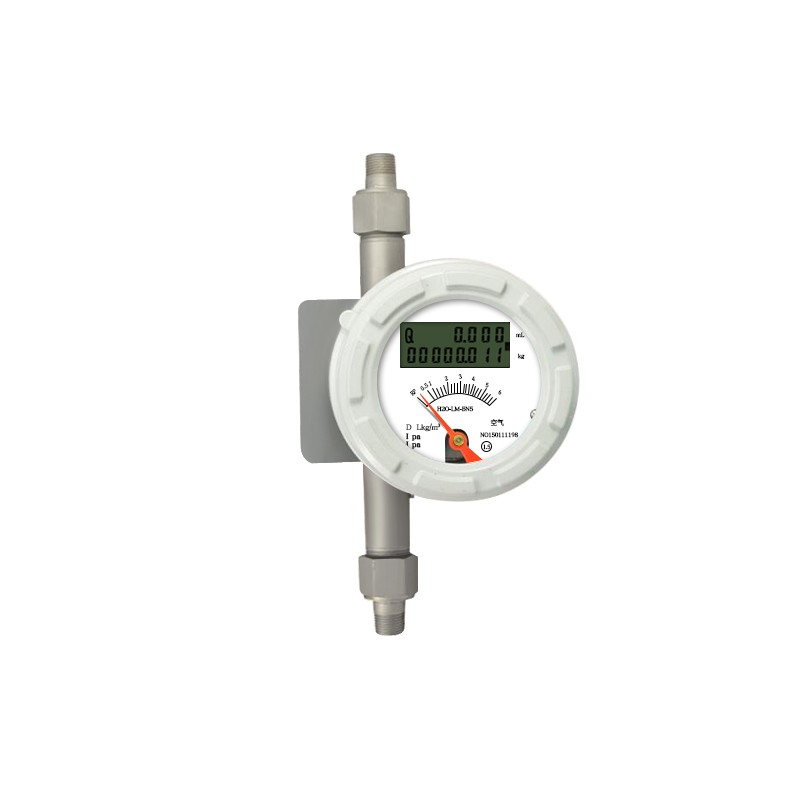Variable area flow meter measures the fluid flow based on the throttling principle, but it changes the flow area of the fluid to keep the differential pressure between the top and bottom of the rotor constant, so it is also called a variable flow area constant differential pressure flowmeter, also called a float flow meter ,variable area flow meter .
Feathers:

1. Installation method: vertical installation, horizontal installation
2. Reliable performance, low maintenance and long service life
3. Low requirements for straight pipe sections
4. Optional charging mode DC power or battery power
5. Two-line display, on-site display of instantaneous/cumulative flow
6. With a keyboard on the indicator, easy to operate and set
7. Body material: 304 stainless steel, 316 stainless steel
8. Display: local display and on-site display
9. Suitable for flammable and explosive occasionsParameter
| | Name | variable area flow meter |
| | Caliber | DN15-150 |
| | Flow Range | Liquid:1.0~150000L/h |
| | Gas:0.05~3000m/H |
| | Precision | ±1.0(Gas)±1.5(Liquid) |
| | Signal Output | 4-20mA |
| | Communication Interface | RS485,HART |
| | Monitor | Pointer or LCD |
| | Measuring Tube Material | Stainless steel, optional PTFE lined |
| | Explosion-proof Grade | Intrinsically safe type: ExiaⅡCT6Ga,Flameproof type: ExdⅡCT6Gb |
| | Installation Method | Standard type: flange connection /
Food type: clamp connection or special customization |
| | Medium Temperature | Routine:-30°C~+120°C |
| | High Temperature:-30°C~+250°C |
| | Low Temperature:-80°C~+100°C |
| | Ambient Temperature | -30°C~+60°C |
| | Turndown | 10:1,20:1(Special) |
Flow range
Diameter (mm) | Flow range | Pressure loss KPa | Accuracy level |
15 | Water L/h | Air m3/h | Water | Air |
Normal temperature type | Anticorrosive | Normal temperature type | ,Anticorrosive | | | |
2.5—25 | 2.5—-25 | 0.07–0.7 | 0.07—0.7 | 6.5 | 7.1 | 1.5
2.5 |
4.0—40 | 4.0—40 | 0.11—1.1 | 0.11—1.1 | 7.2 |
3.6—63 | 6.3—63 | 0.18—1.8 | 0.18—1.8 | 6.6 | 7.3 |
10—100 | 10—100 | 0.28—2.8 | 0.28—2.8 | 7.5 |
16—-160 | 16—160 | 0.4—4.0 | 0.4—4.0 | 6.8 | 8.0 |
25—-250 | 25—-250 | 0.7—7.0 | 0.7—-7.0 | 7.2 | 10.8 |
40—400 | 40—400 | 1.0—10 | 1.0—-10 | 8.6 | 10.0 |
63—630 | ——- | 1.6—16 | ——— | 11.1 | 14.0 |
25 | 100—1000 | 63—630 | 3.0—30 | 1.6—-16 | 7.0 | 7.7 |
160—1600 | 100—1000 | 4.5—45 | 3.0—30 | 8.0 | 8.8 |
250—2500 | 160—-1600 | 7.0—-70 | 4.5—-45 | 10.8 | 12.0 |
400—4000 | 250—2500 | 11—110 | 7.0—–70 | 15.8 | 19.0 |
50 | 630–6300 | 400—4000 | 18—180 | 11—–110 | 8.1 | 8.6 |
1000–10000 | 630—6300 | 25—-250 | 18—-180 | 11.0 | 10.4 |
1600—16000 | 1000—10000 | 40—-400 | 25—-250 | 17.0 | 15.5 |
80 | 2500—25000 | 1600—16000 | 60—600 | 40—-400 | 8.1 | 8.0 |
4000—40000 | 2500–25000 | 100—-1000 | 60—600 | 9.5 | 13.0 |
100 | 6300—63000 | 4000—40000 | 200—2000 | 100—-1000 | 10.0 | 11.0 |
| | | | |
10000—100000 | ——- | 300—-3000 | ——– |
How to choose a suitable flow meter?
1. Measuring medium
2. Pipe material and meter body material
3. Medium temperature and pressure
5. Flow range
6. Installation method, connection method
7. On-site display or on-site display
Factory




